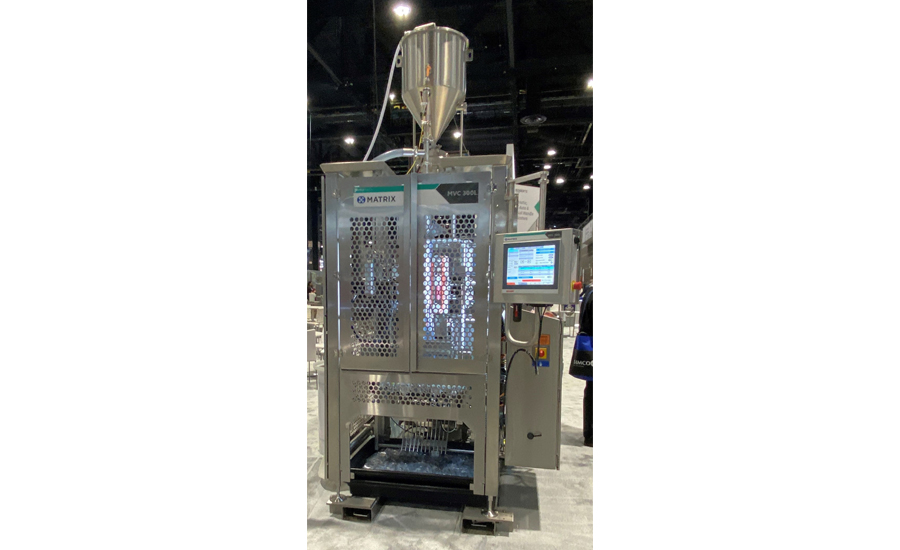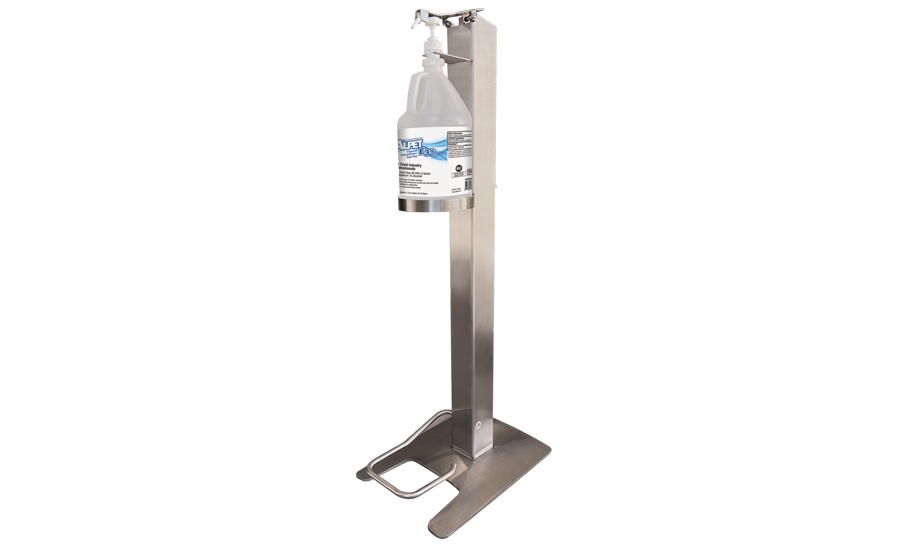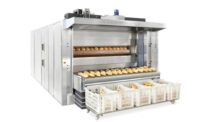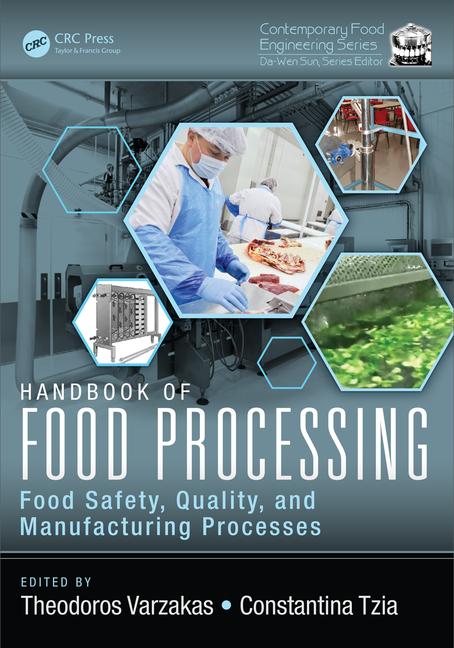Bakers and snack makers seek ovens and proofers with advanced capabilities
When keeping a clean operation, snack and bakery relies on top tech to overcome challenges.

Courtesy of Best Sanitizers
Snack food and wholesale bakery companies who are looking to upgrade their cleaning and sanitation regimens are concerned about myriad issues such as preventing contamination that could lead to recalls, according to companies that offer equipment and technology to meet these challenges. They turn to products that hold the line between production and non-production areas, use materials like stainless steel that can handle more corrosive cleaning solutions, and validate over time that sanitation systems are getting the job done.
Patrick Casey, regional sales manager at Best Sanitizers, says his customers are concerned first and foremost about potential recalls. “Are we having a Listeria outbreak on the equipment that’s getting into the product?” he says. “Is there something that’s getting in? Usually, it has to do with bacteria that may or may not grow within that facility.”
As a result, foot and hand sanitation programs have evolved from an afterthought or a “nice to have” into standard operating procedure, Casey says. “We’ve learned that you can have salmonella in a dry environment,” he remarks. “Before, they would take care of cleaning and sanitizing the equipment. They’ve found you can also trace salmonella on footwear. They’re safeguarding every opportunity where bacteria can be introduced. That’s the game-changer: Before it was an afterthought, now it’s the standard.”
Proper hand-washing also has become more of a must-have, Casey states. "If a cracker plant has 10 team members on a shift, the company wants to ensure they are doing what they’re supposed to be doing to keep product safe. “Are they washing their hands?” he asks. “Are they checking the product? It goes back to that human error side of things. Am I introducing any foreign bacteria or objects into that product?”
Mohn-GmbH and its new U.S. representative AmTrade Systems Inc. also have seen interest in ensuring greater compliance with food safety and hygiene, says Michael Kapps, national sales manager for AmTrade. “They’re making sure people aren’t taking shortcuts and bypassing footbaths they’ve used to ensure footwear is clean and to make sure that people are actually following the food safety protocols, with hand-washing and sanitizing. Controlled access and enforced compliance with the cleaning is important, especially when we hear about the recalls in our segment of the industry.”
Check-in stations provide an all-in-one solution in which such steps are required to be taken to enter the production area, says Thomas Marrow, export manager for Mohn. “The benefit is that they have the guarantee that each worker is actually free of bacteria, at least washing their hands, before they get into contact with the actual product. The problem is that people who have used the restroom or are coming from [elsewhere], you do not know where they have been and what they have touched before entering production. You don’t want them to contaminate the product.”
Devin Morris, sales engineer for Matrix, hears from customers who have misconceptions about what snack and bakery machines can offer in terms of washdown capabilities. “IP ratings get tossed around a lot from different manufacturers, down to the subcomponent level, things like motors and sensors, which are all important to construction,” he relates. “We educate the customer on what that means for sanitation on your equipment. There’s always a big concern of if a manufacturer comes out and says their machine is only rated to IP65, they may have a concern because they have a very high caustic washdown, so they need a machine to be IP69.”

Matrix takes a holistic approach and attempts to ensure the customer understands what the process is and how that fits into the longevity, Morris states. “We have guidelines for that we share with customers, based on the experience we’ve had in these markets over the last 25 years—what works well and how to protect things. A lot of it is education. Customers know more about their process than anyone else. We like to listen first: ‘What are the pain points for you guys?’ And we try to work around that.”
Generally speaking, customers in snack and bakery want 316-grade stainless steel in any product contact, Morris says, since that’s going to be more resistant to corrosive cleaning materials in areas that will receive the most attention during the cleaning cycle.
“We’ve done that for quite a long time,” he reports. “If it’s an application where we’re worried that product is going to find its way onto other parts of the machine, we’ll expand that a little bit and do a special grade of stainless steel.”
A significant concern that FoodReady hears from snack and bakery customers is the ability to build their dry-cleaning skillset, given that wet cleaning does not work when dealing with flour, says Sam Pena, head of digital sanitation and lead consultant for the company.
“With periodic equipment cleaning, you want to identify, ‘What is the right frequency?’” he inquires. “Most bakeries run 100-something hours before they shut down for a wet clean. They’re on what you call extended runs. Periodic equipment cleaning practices, if they’re not right on the money, you’re going to have biofilm, you’re going to see it on the finished product; it’s going to spoil.”
Flour silos generate significant pest issues in the form of flour beetles, so ensuring that such facilities are on a regular rotation for cleaning as flour supply is rotating in and out is a key issue, Pena says.

“That’s one thing I see at a lot of snack companies—and the delivery of the flours, too,” Pena relates. “You have your flour lines going from A to B to C into your mixer. How do you clean those frequently enough? If there are any clogs, you’re going to build some hard flour in time and clog things up. Make sure you have it on a frequent cleaning schedule avoids those clogs when you’re delivering flour from the silo to the mixer.”
Sanitation validation is a top concern of FoodReady’s customers, according to CEO Gerry Galloway.
“How do you validate that you’re doing a good job, when you do sanitation?” he says. “How do you prove that out? There’s the testing side of sanitation validation, called environmental monitoring, where you’re testing after the cleaning to make sure there’s not pathogen growth, that you’re eliminating any growth as well as harmful chemicals and residues.”
Companies that want to track these issues, as well as ensure regular cleaning schedules, should switch from paper manuals to a digitized system, if they have not already, to provide greater peace of mind for ownership and management that controls are in place, Pena says. “If you imagine 600 [team members], how am I supposed to fly into every plant, go into every area they’re cleaning and find out if they’re doing it right?” he says. “You want to audit the process with employees on the ground level. I can do that from my laptop, and take a couple of tasks from each plant to assess whether there are red flags—and in two minutes.”Looking for a reprint of this article?
From high-res PDFs to custom plaques, order your copy today!








